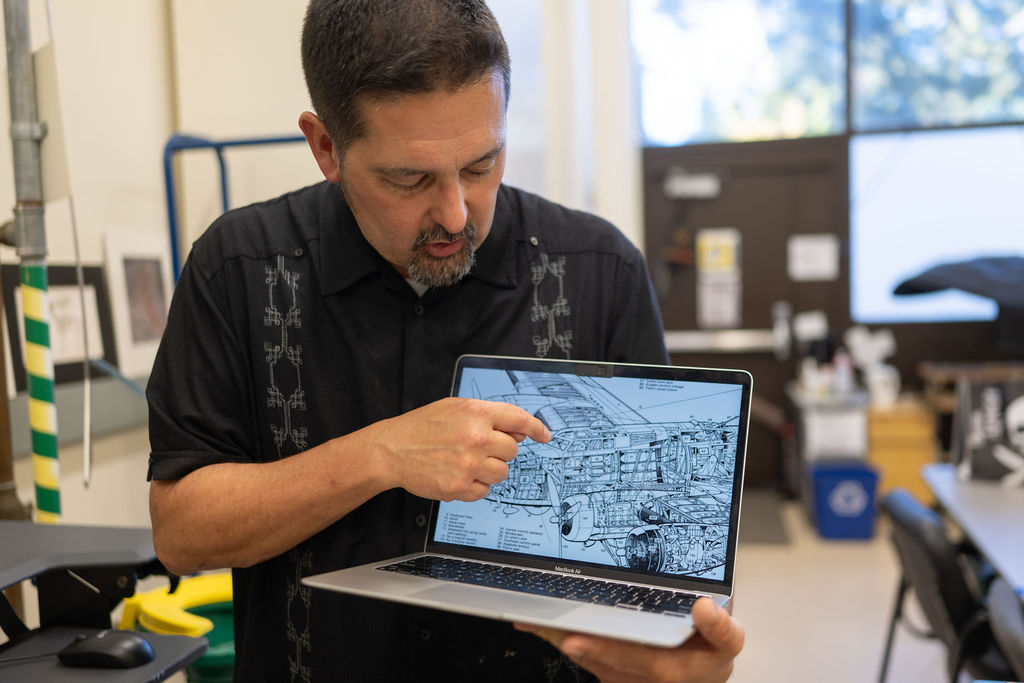Science
UC Berkeley’s Innovative Project Aims to Recover WWII Soldiers

A team of researchers at the University of California, Berkeley, is developing a pioneering resource library designed to assist in recovering the remains of U.S. service members missing since World War II. Led by Jun Sunseri, an associate professor of anthropology, the project aims to leverage crowdsourcing and digital technology to expedite the identification and recovery of fallen soldiers.
Sunseri’s motivation stems from personal connections to military service. His grandfather, Stanley, served as a mechanic in the U.S. Army Air Forces during World War II, and Sunseri recalls his grandfather’s poignant stories about comrades who did not return home. Inspired by these narratives, Sunseri has blended his engineering background with archaeological expertise to address the challenge of locating and recovering approximately 80,000 U.S. servicemembers still unaccounted for globally, as reported by the Defense POW/MIA Accounting Agency (DPAA).
Approximately 38,000 of these missing remains are believed to be recoverable. Each year, teams supported by the DPAA excavate sites where aircraft are thought to have crashed, often facing numerous obstacles. These missions are typically short, lasting about a month, during which teams must work efficiently to navigate challenging environments and dispose of any unexploded ordnance present.
“Making the most of a limited timeframe can be incredibly challenging,” Sunseri noted. The complexity of crash sites complicates recovery efforts, as the distinguishing features of aircraft components can be nearly indistinguishable. Many of the experts who could identify specific parts are often not present at the site, creating a pressing need for more accessible resources.
Recognizing this gap, Sunseri has initiated the Missing American Aircrews Project. The project aims to create a comprehensive library of 2D and 3D images and videos of military aircraft, uniforms, and equipment, which teams can reference during recovery operations. This initiative will rely heavily on crowdsourced contributions, inviting the public to share photographs and videos taken at military museums or of personal collections.
The first phase of the project is focused on accumulating high-quality images from various sources, including military enthusiasts and collectors. Sunseri emphasized the importance of these details, stating, “Merging this information with military records will enhance our understanding of specific artifacts found at crash sites.” This approach aims to provide archaeologists with a clearer perspective when deciphering components, ultimately aiding in the orientation within large debris fields.
The second phase will engage military history enthusiasts and veterans globally to help organize and validate the submitted images and scans. Their expertise will assist in refining the collection, ensuring that the information is accurate and useful for field teams. This collaborative effort will also help prepare mission-specific packets, which will deliver vital contextual information about the missions and personnel involved.
The final phase involves compiling these resources into extensive digital files, organized by aircraft type, time period, and mission details. These packets will be designed for offline access, enabling field operatives to quickly reference comprehensive models of aircraft and their components, enhancing the efficiency of recovery efforts.
Sunseri’s lab, comprising students passionate about archaeology, has been actively involved in the project since its inception. They have visited air museums, collaborated with citizen scientists, and participated in field recovery operations to refine the project’s goals and methodologies. “We are just getting started,” Sunseri stated, acknowledging that the project is being developed alongside his teaching and grant-writing responsibilities.
Despite operating with minimal funding, Sunseri has completed training with the DPAA and is working towards establishing long-term partnerships to ensure the resource library’s sustainability and effectiveness. He believes that this initiative could significantly enhance mission success rates and foster community engagement.
Reflecting on the broader implications of the project, Sunseri remarked, “I see this as a touch point for how we affect a broader group of Americans.” He envisions the collaborative nature of the project bridging societal divides by uniting individuals with a shared purpose. Ultimately, the mission is about providing closure to families and ensuring that service members who made the ultimate sacrifice are brought home.
For further details, visit the Missing American Aircrews Project website or contact Sunseri at [email protected].
-

 Lifestyle4 months ago
Lifestyle4 months agoLibraries Challenge Rising E-Book Costs Amid Growing Demand
-

 Sports3 months ago
Sports3 months agoTyreek Hill Responds to Tua Tagovailoa’s Comments on Team Dynamics
-

 Sports3 months ago
Sports3 months agoLiverpool Secures Agreement to Sign Young Striker Will Wright
-

 Lifestyle3 months ago
Lifestyle3 months agoSave Your Split Tomatoes: Expert Tips for Gardeners
-

 Lifestyle3 months ago
Lifestyle3 months agoPrincess Beatrice’s Daughter Athena Joins Siblings at London Parade
-

 World3 months ago
World3 months agoWinter Storms Lash New South Wales with Snow, Flood Risks
-

 Science4 months ago
Science4 months agoTrump Administration Moves to Repeal Key Climate Regulation
-

 Science3 months ago
Science3 months agoSan Francisco Hosts Unique Contest to Identify “Performative Males”
-

 Business4 months ago
Business4 months agoSoFi Technologies Shares Slip 2% Following Insider Stock Sale
-

 Science4 months ago
Science4 months agoNew Tool Reveals Link Between Horse Coat Condition and Parasites
-

 Sports4 months ago
Sports4 months agoElon Musk Sculpture Travels From Utah to Yosemite National Park
-

 Science4 months ago
Science4 months agoNew Study Confirms Humans Transported Stonehenge Bluestones








